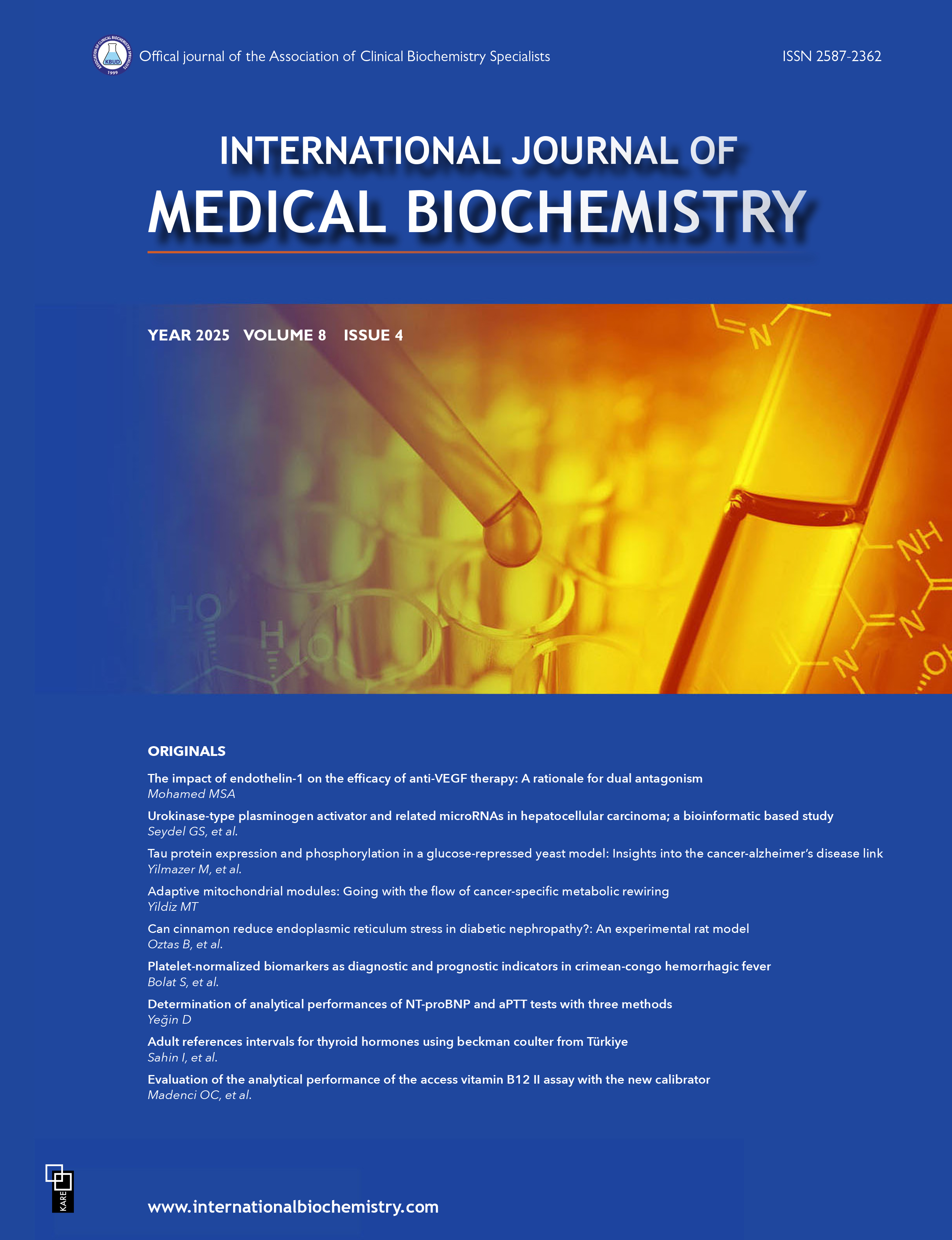Comparison of neutrophil-to-lymphocyte, platelet-to-lymphocyte, and monocyte-to-lymphocyte ratios in patients with schizophrenia, bipolar disorder, and major depressive disorder
Zekiye Catak1, Emel Uzmez2, Nefise Ozturk3, Kader Ugur41Department of Biochemistry, Health Sciences University Elazig Training and Research Hospital, Central Laboratory, Elazig, Turkey2Department of Microbiology, Elazig Mental Health and Diseases Hospital, Central Laboratory, Elazig, Turkey
3Department of Psychiatry, Elazig Mental Health and Diseases Hospital, Elazig, Turkey
4Department of Endocrinology and Metabolic Diseases, Firat University Faculty of Medicine, Elazig, Turkey
INTRODUCTION: It is thought that the immune system may play a role in the etiopathogenesis of many psychiatric and neurological diseases. In recent years, it was suggested that the neutrophil-to-lymphocyte, platelet-to-lymphocite, and monocyte-to-lymphocyte ratio (neutrophil-to-lymphocyte ratio (NLR), platelet-to-lymphocyte ratio (PLR), and monocyte-to-lymphocyte ratio (MLR), respectively) analysis is used to predict peripheral inflammation. Therefore, we aimed to compare the changes in NLR, PLR, MLR values in patients with schizophrenia, bipolar disorder, and depression.
METHODS: In this retrospective study, a total of 1543 inpatients/outpatients with a diagnosis of schizophrenia, bipolar disorder, and depression admitted to a mental health hospital between 2016 and 2017 were evaluated. Eighty control subjects were included from the hospital. All groups (schizophrenia, bipolar, depression, controls) were compared with one another in terms of NLR, PLR, and MLR values using SPSS 21.
RESULTS: There was significant difference in NLR between the schizophrenia group and healthy controls (p=0.007). When the patient groups (schizophrenia, bipolar disorder, and depression groups) were compared with each other, NLR values were significantly higher in patients with schizophrenia compared to depression groups (p<0.001). MLR values for the schizophrenia and bipolar disorder groups were significantly higher than for the depression group (p=0.001 and p<0.001, respectively). PLR values were found to be significantly higher in patients with schizophrenia than in patients with bipolar disorder (p=0.007).
DISCUSSION AND CONCLUSION: The changes in NLR, PLR, and MLR values used as indicators of inflammation have shown that psychiatric disorders are associated with inflammatory processes. However, it was observed that this relationship was more obvious in schizophrenia compared to bipolar disorder and depression.
Keywords: bipolar, major depressive disorder, monocyte-to-lymphocyte ratio, neutrophil-to-lymphocyte ratio, platelet-to-lymphocyte ratio, schizophrenia
Manuscript Language: English







